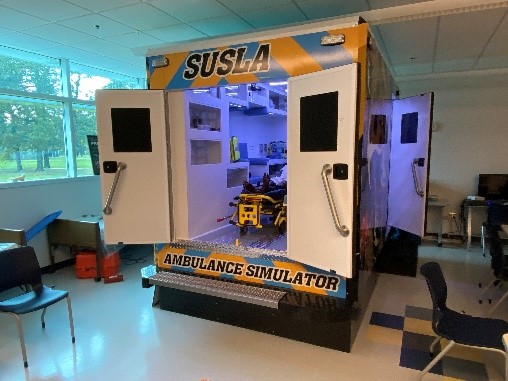EMT Basic/EMT Paramedic

Nationally Registered Emergency Medical Technicians and Paramedics, (NREMTB and NREMTP) care for sick and injured people. Typically, in a home or outside environment, including highways and just about anywhere a person may go. When it comes to emergency settings, EMS workers never know where their services will be needed next. They are responsible for prompt, effective emergency care, and safe transportation of their patient to a hospital for continued care. Patients in EMS care depend on a well-trained, skilled provider that can assist them through, very often, life changing events.
Currently, SUSLA provides EMT Basic and paramedic training for students of all ages and backgrounds. Our training program began in 2016 and the Paramedic Program is currently under a Letter of Review (LoR) as required by our accreditation entities, CoAEMSP and ultimately CAAHEP. We look forward to complete accreditation this year.
The specific responsibilities of EMT’s and Paramedics depend on their level of certification and the state they work in. The National Registry of Emergency Medical Technicians (NREMT) provides national certification of EMT’s and Paramedics at four levels: EMR, EMT Basic, Advanced EMT, and Paramedic.
An Advanced EMT, also known as an EMT-Intermediate, has completed the requirements for the EMT Basic level, as well as instruction in more advanced medical procedures, such as administering intravenous fluids and some medications.
Paramedics provide more extensive prehospital care than do EMTs. In addition to doing the tasks of EMTs, paramedics can give medications orally and intravenously, interpret electrocardiograms (EKGs)—which monitor heart function—and use other monitors and complex equipment.
The EMT must have excellent communication skills, strong passion for helping others, and the dedication for continued learning. Learning never stops! Medicine, especially emergency medicine, changes constantly for the betterment of patient care. The EMT must also learn how to help others in the often unpredictable and stressful field surroundings.
Beyond the obvious emergency 911 responsibility, EMT’s may be found on oil platforms, safety roles, working in fire and police departments, or even on a movie set. There are many employment opportunities for the well-trained, dedicated EMT. At Southern University at Shreveport, we teach from the Nationally accepted standards from the National Registry of EMT’s. At the end of our program, candidates should be prepared for National Registry and State of Louisiana testing. We encourage you to take some time and review the following web sites from organizations that provide EMT oversight
